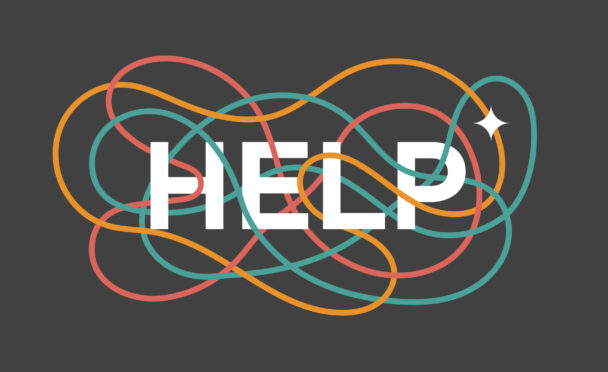Why Tactile Banking Still Works in a Digital-First World
In an age where inboxes are overflowing and banner blindness is real, physical mail remains one of marketing’s most surprising secret weapons. Especially in financial services, where trust and clarity matter more than ever. Why? Because direct mail doesn’t just arrive. It lingers. According to JICMAIL data direct mail stays in the home for an average …
Why offering ‘Earth, Moon, and Galaxy’ concepts challenges the status quo in financial services
In financial services, the appetite for bold ideas often gets filtered through layers of risk, compliance, and caution. The result? Work that’s well-executed but safe. Familiar. Expected. We’ve seen how hard it can be for even the most ambitious Clients to break free from what they’ve always done. That’s why we use a concepting framework …
Why Financial Brands Must Challenge Their Own Assumptions
Stop guessing. Start leading. In a commoditized market, the most dangerous thing you can do is assume you already know what your audience needs. At Shiny, we see this constantly: financial brands making decisions based on stale assumptions, legacy data, or internal echo chambers. And it’s not because the teams aren’t smart — it’s because …
How competitive research exposes what’s possible—not just what is—in financial services
Competitive research gets a bad rap in financial services. It’s often treated like a benchmarking exercise. Something you do to validate where you are—or to get permission to play catch-up. But the point of competitive research isn’t to be the best of the banks. Competitive research isn’t about catching up. It’s about seeing what’s coming. …
Flat designs hide problems. Paper mockups don’t.
When you design direct mail on a screen, you only think you know what you’re getting.Fonts look bigger. Colors pop harder. White space feels luxurious. Then you print it, fold it, and hold it in your hand. And suddenly, the flaws jump out. At Shiny, we prototype our direct mail concepts the old-fashioned way throughout …
Product Truth vs. Customer Truth
Most financial brands think their problem is awareness. It isn’t. It’s relevance. You can buy awareness. You can’t buy relevance. You earn it by saying the one thing that makes someone stop scrolling, stop comparing, and start thinking, “This might actually work for me.” That doesn’t come from your product truth. It comes from your …
Design files fool everyone: Why early prototyping matters
Here’s the truth about the process of creating digital experiences: you can’t see all the pitfalls in the design file. Worse, too often they’re found much later when real people use your site or app — and when fixing them is a lot more expensive. The truth is, great design can be filled with UX …
Why a Target State Vision Unlocks More Than Just a Plan
A lot of financial marketers work from a place of constraint. They start with what the brand has done before, what compliance will allow, what last year’s budget looked like. It makes sense. But it also caps the ambition of the work before it even begins. We would advocate for the opposite. Remove all the constraints. …
Personas That Work: Building Around Real Psychological Needs, Not Demographics
Let’s be honest: Most financial services brands still build personas based on demographics or outdated assumptions. Labels like “Millennial,” “Affluent,” or “High-Value” might seem useful, but they often miss the mark on what truly drives customer behavior. At Shiny, we see this disconnect regularly. Clients come to us with personas that don’t reflect the current …
What Financial Brands Can Learn From Brands Like Netflix and Amazon
Here’s the trap: you benchmark your digital experience against other banks as a best practice, right? That might tell you what your peers are doing. But it won’t tell you what your customers expect. They’re not spending all day comparing bank apps. They’re living in the worlds of brands like Amazon, Netflix, Spotify, YouTube—brands that have …
Stakeholder Interviews – Challenging Internal Silos
Before we write a Responsive Brief for our financial services clients, we listen. Not to the customer—yet—but to the key stakeholders inside the business. Because no matter how aligned a company thinks it is, there are always invisible silos, assumptions, and internal truths that muddy the water when trying to get to work that drives …
Defining Your Real Enemy with a Responsive Brief
In financial services, you don’t lose customers to better brands. You lose them to inertia. It’s not the competitor who wins the day. It’s the back button. It’s the half-finished form. It’s the customer who decided to think about it later and never came back. That’s the real enemy. And if you don’t name it …
Meeting customers where they are: Channel of choice matters.
April is Financial Literacy Month. As experts in marketing financial services, we’re big believers in financial services brands having an obligation to help its customers first and foremost. And ultimately, that help should yield financial literacy in some small or large way. But like all service-oriented brands, there is no one-size fits all when it …
Meeting customers where they are: Do you assume your new customers know how to use a credit card?
April is Financial Literacy Month. As experts in marketing financial services, we’re big believers in financial services brands having an obligation to help its customers first and foremost. And ultimately, that help should yield financial literacy in some small or large way. But like all service-oriented brands, there is no one-size fits all when it …
Why is Financial Services underserving an audience worth billions?
Here’s an interesting situation: financial services companies largely ignore a well-funded audience that has an incredible long-term entrepreneurial track record, all because this audience didn’t grow up under the US financial structure. I’m talking about a group of which I am a member, namely international students in particular, and immigrants in general. International students bring …
What happened to the metaverse?
Recently I hosted an internal meeting about the current state of “the metaverse”, “VR/AR tech”, etc., and how it seems to be all talk and no substance. It’s been about a year since Zuckerberg changed the company name from Facebook to Meta, and what do they have to show for it? Well, other than finally …
Three ways financial services companies can win Gen Z's loyalty
Gen Z is keeping me up at night. As a mother of two Gen Z kids, I sometimes find myself awake at night ruminating about my children being in a position to make wise use of their income and having the discipline and diligence to save for their future. As a marketer, I sometimes find …
Fintech brands aren’t stealing customers from big financial brands. Big financial brands are giving their customers away.
Looking for a painful experience? Try opening savings accounts with large banks. Afterward you’ll realize just why fintechs are such a competitive threat to large established brands. Our Big Bank Test We were doing a research project for one of our financial clients and decided to open savings accounts with different brands to better understand …
Help.
I’ve been thinking a lot about the word ‘help’ these days. We recently delivered a strategy presentation to one of our financial services clients and the word probably came up hundreds of times. Literally. Financial services is a complicated business. No matter what part of the space your business plays in, help is literally the …
Brands should think like a 7 year old.
Brands should think like Corn Kid. I don’t mean all brands should be jumping on the latest trends to try and make hay with whatever clip/meme/story is capturing the public’s interest (though that’s not a bad thing to do for many brands.) What I mean is that brands should embrace the inherent positivity and joy …
Why offering ‘Earth, Moon, and Galaxy’ concepts challenges the status quo in financial services
In financial services, the appetite for bold ideas often gets filtered through layers of risk, compliance, and caution. The result? Work that’s well-executed but safe. Familiar. Expected. We’ve seen how hard it can be for even the most ambitious Clients to break free from what they’ve always done. That’s why we use a concepting framework …
How competitive research exposes what’s possible—not just what is—in financial services
Competitive research gets a bad rap in financial services. It’s often treated like a benchmarking exercise. Something you do to validate where you are—or to get permission to play catch-up. But the point of competitive research isn’t to be the best of the banks. Competitive research isn’t about catching up. It’s about seeing what’s coming. …
Product Truth vs. Customer Truth
Most financial brands think their problem is awareness. It isn’t. It’s relevance. You can buy awareness. You can’t buy relevance. You earn it by saying the one thing that makes someone stop scrolling, stop comparing, and start thinking, “This might actually work for me.” That doesn’t come from your product truth. It comes from your …
Why a Target State Vision Unlocks More Than Just a Plan
A lot of financial marketers work from a place of constraint. They start with what the brand has done before, what compliance will allow, what last year’s budget looked like. It makes sense. But it also caps the ambition of the work before it even begins. We would advocate for the opposite. Remove all the constraints. …
What Financial Brands Can Learn From Brands Like Netflix and Amazon
Here’s the trap: you benchmark your digital experience against other banks as a best practice, right? That might tell you what your peers are doing. But it won’t tell you what your customers expect. They’re not spending all day comparing bank apps. They’re living in the worlds of brands like Amazon, Netflix, Spotify, YouTube—brands that have …
Defining Your Real Enemy with a Responsive Brief
In financial services, you don’t lose customers to better brands. You lose them to inertia. It’s not the competitor who wins the day. It’s the back button. It’s the half-finished form. It’s the customer who decided to think about it later and never came back. That’s the real enemy. And if you don’t name it …
Meeting customers where they are: Do you assume your new customers know how to use a credit card?
April is Financial Literacy Month. As experts in marketing financial services, we’re big believers in financial services brands having an obligation to help its customers first and foremost. And ultimately, that help should yield financial literacy in some small or large way. But like all service-oriented brands, there is no one-size fits all when it …
What happened to the metaverse?
Recently I hosted an internal meeting about the current state of “the metaverse”, “VR/AR tech”, etc., and how it seems to be all talk and no substance. It’s been about a year since Zuckerberg changed the company name from Facebook to Meta, and what do they have to show for it? Well, other than finally …
Fintech brands aren’t stealing customers from big financial brands. Big financial brands are giving their customers away.
Looking for a painful experience? Try opening savings accounts with large banks. Afterward you’ll realize just why fintechs are such a competitive threat to large established brands. Our Big Bank Test We were doing a research project for one of our financial clients and decided to open savings accounts with different brands to better understand …
Brands should think like a 7 year old.
Brands should think like Corn Kid. I don’t mean all brands should be jumping on the latest trends to try and make hay with whatever clip/meme/story is capturing the public’s interest (though that’s not a bad thing to do for many brands.) What I mean is that brands should embrace the inherent positivity and joy …
What matters to you?
Want to get work that really matters for you and your business? Let’s talk.
Email Us



















